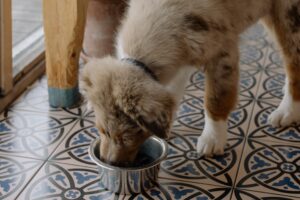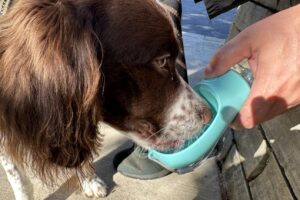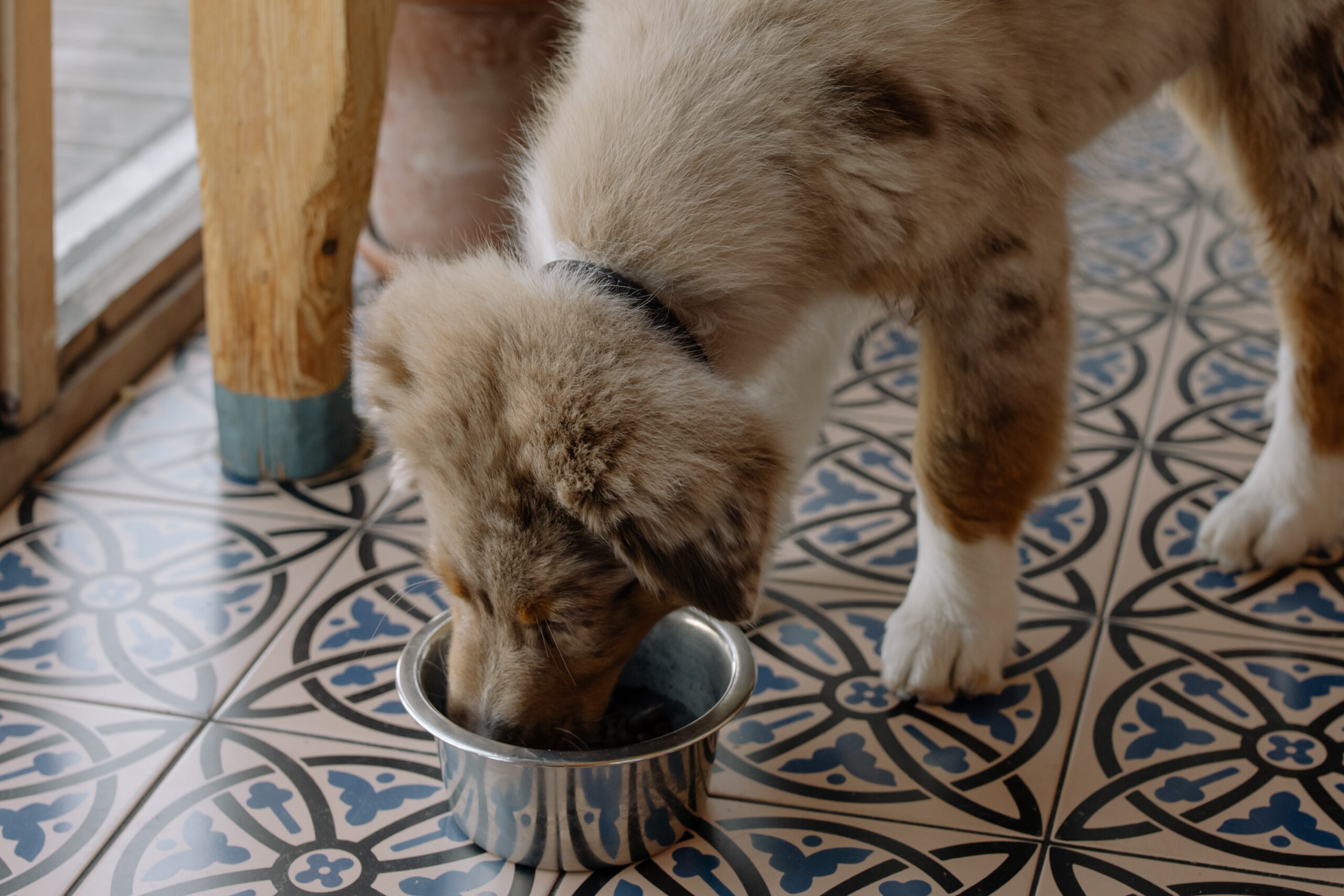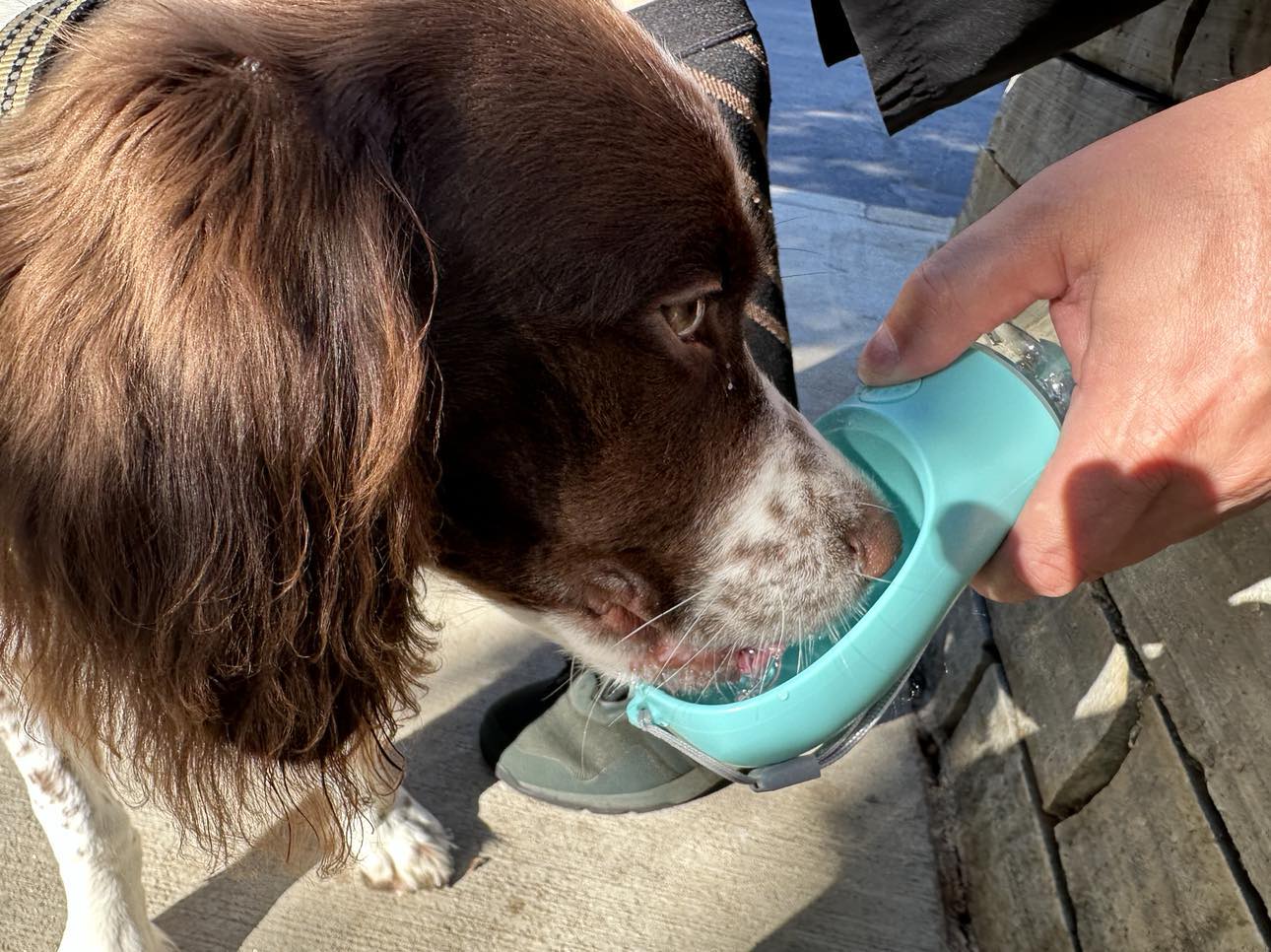Bringing home a new puppy is an exciting and joyous experience for any dog owner. However, it’s not uncommon for puppy owners to encounter a frustrating challenge during the early stages of raising their furry friend: puppy biting. Many new puppy owners are taken aback by their adorable little furball’s tendency to nibble, gnaw, and sometimes even chomp on everything in sight, including their hands and feet.
While puppy biting may seem like a misbehavior, it’s important to understand that it’s a natural part of a puppy’s development. Puppies explore the world through their mouths, and biting is an instinctive behavior they use to learn and interact with their environment. However, as these cute little balls of energy grow into adult dogs, their biting can become a serious problem if not addressed early on.
This is where bite inhibition comes into play. Bite inhibition is the process of teaching a puppy to control the force of their bite, ensuring they learn to use a softer mouth and avoid causing harm to humans or other pets during play or interaction. Teaching bite inhibition is crucial for raising a well-behaved and safe adult dog, one who can play gently and socialize without causing harm. In this article, we will explore various techniques and strategies to effectively teach bite inhibition and foster a positive relationship with your puppy. By doing so, you can set the foundation for a loving and harmonious bond that will last a lifetime.
Understanding Puppy Biting Behavior
Reasons for Puppy Biting
To effectively address puppy biting, it’s essential to understand the reasons behind this behavior. Puppies bite for various reasons, and each has its purpose. One primary reason is teething. Just like human babies, puppies experience discomfort as their baby teeth are replaced by adult teeth. Biting provides them with relief and helps loosen their baby teeth. Additionally, puppies use their mouths to explore the world around them. They are curious creatures and use their teeth to interact with objects and people, much like how human babies use their hands.
Stages of Puppy Biting
Puppy biting can occur in different stages of their development. The initial stage is around 2 to 4 months old when puppies start teething, and their gums feel sore. During this time, they tend to bite more frequently to alleviate the discomfort. The next stage, usually between 4 to 6 months old, is when puppies are more playful and may engage in rougher play with biting as part of their interactions.
Playful Mouthing vs. Aggressive Biting
It’s crucial for puppy owners to distinguish between playful mouthing and aggressive biting. Playful mouthing is a normal behavior during play and interaction, where the puppy exhibits a soft, gentle bite without causing harm. They often accompany this behavior with wagging tails and happy expressions. On the other hand, aggressive biting involves forceful and persistent biting with an intense, serious demeanor. Aggressive biting is not playful and may be accompanied by growling or snarling. Understanding the difference allows owners to respond appropriately and address the behavior in a positive and effective manner.
Teaching Bite Inhibition
Understanding Bite Inhibition
Bite inhibition is a vital aspect of puppy training that focuses on teaching puppies to control the force of their bites. It involves teaching puppies to have a soft mouth and to gauge the appropriate pressure when mouthing or biting. Bite inhibition is crucial because it sets the foundation for a well-mannered and safe adult dog. If a puppy learns proper bite inhibition during their early stages, it helps prevent serious biting incidents as they grow older.
Step-by-Step Techniques to Teach Bite Inhibition
- Yelping Technique: When a puppy bites too hard during play or mouthing, let out a high-pitched yelp to imitate the sound of a fellow puppy. This yelping mimics the response of a playmate when bitten too hard, and it helps the puppy understand that their bite was too forceful. After yelping, withdraw attention briefly to signal that playtime stops when biting becomes excessive.
- Redirecting Technique: When a puppy shows biting tendencies, redirect their attention to an appropriate chew toy or interactive game. This technique teaches the puppy that biting human hands is not acceptable, but biting toys is allowed and encouraged. Reward and praise the puppy when they interact with toys, reinforcing positive behavior.
The Importance of Consistency and Positive Reinforcement
Consistency is key in teaching bite inhibition. All family members and anyone interacting with the puppy should apply the same techniques to reinforce the lesson effectively. It’s crucial not to encourage rough play with hands or fingers, as it can confuse the puppy and hinder the training process.
Positive reinforcement is a powerful tool in training puppies. Whenever the puppy exhibits gentle mouthing or controlled bites, reward them with verbal praise, affection, or treats. Positive reinforcement encourages puppies to repeat desirable behavior and helps solidify the concept of bite inhibition.
Remember, teaching bite inhibition takes time and patience. It is essential to remain calm and avoid punishing the puppy for normal mouthing behaviors. With consistent training and positive reinforcement, your puppy will learn to control their bites and grow into a well-behaved and socially adept adult dog.
Socialization and Bite Reduction
The Role of Proper Socialization in Reducing Puppy Biting
Socialization plays a crucial role in reducing puppy biting and fostering positive interactions with the world around them. During the early stages of a puppy’s life, exposing them to a variety of people, animals, and environments helps them develop better bite inhibition and communication skills. Through socialization, puppies learn acceptable levels of force when interacting with others and become more adaptable to different situations.
Benefits of Interaction with Other Dogs and People During Socialization
Interacting with other dogs and people during socialization provides invaluable learning experiences for puppies. Through play and communication with other dogs, they learn appropriate bite pressure, body language, and communication cues. Similarly, exposure to different people helps them recognize various human behaviors and responses. Positive interactions during socialization contribute to a well-rounded and confident adult dog.
Tips on Organizing Controlled Play Sessions
To promote positive behaviors during play sessions, it’s essential to organize controlled interactions. Here are some tips to ensure successful play sessions:
- Choose Playmates Wisely: Select well-socialized and friendly dogs for playdates, preferably of similar size and energy level to your puppy.
- Supervise Play: Always supervise interactions to ensure play remains safe and controlled. Intervene if play escalates or if a dog becomes overly rough.
- Set Time Limits: Keep play sessions short to prevent overstimulation and fatigue, which could lead to excessive biting or frustration.
- Use Positive Reinforcement: Praise and reward your puppy for exhibiting gentle play behaviors and following proper bite inhibition.
- Avoid Punishment: Avoid using punishment during play sessions, as it can create anxiety and confusion for the puppy.
By providing proper socialization and organizing controlled play sessions, you offer your puppy opportunities to learn and refine bite inhibition skills. Socialization helps shape your puppy into a well-behaved and confident canine companion, reducing the likelihood of problematic biting behaviors as they mature.
Managing Puppy Biting in Various Situations
Handling Biting During Playtime and Training Sessions
While playtime and training are essential for a puppy’s development, it’s common for them to exhibit biting behaviors in these situations. To manage puppy biting during playtime and training:
- Use Appropriate Toys: Offer a variety of chew toys and interactive toys to redirect their biting behavior away from hands and clothing.
- Incorporate Training: Integrate obedience training into play sessions to reinforce commands like “leave it” and “drop it” to discourage unwanted biting.
- Use Time-Outs: If the puppy becomes overly excited and starts to bite, calmly remove yourself from the interaction for a brief time-out to teach them that biting ends playtime.
- Practice Gentle Play: Encourage gentle play by offering soft petting and slower movements to minimize overexcitement.
Reacting to Biting Out of Fear or Frustration
Biting out of fear or frustration may occur when a puppy feels threatened or anxious. To react appropriately in such situations:
- Avoid Punishment: Refrain from scolding or punishing the puppy, as it may increase fear or anxiety.
- Create a Safe Environment: Provide a secure and calming environment to help reduce the puppy’s stress levels.
- Gradual Exposure: Gradually introduce the puppy to new experiences and situations, rewarding calm behavior during exposure.
Managing Biting During Grooming and Handling
Grooming and handling are essential for your puppy’s health and well-being. To manage biting during grooming and handling:
- Start Slowly: Introduce grooming tools and handling gradually to acclimate the puppy to these activities.
- Use Positive Reinforcement: Reward calm behavior during grooming and handling with treats and praise.
- Seek Professional Help: If the puppy displays extreme resistance or fear during grooming, consider seeking help from a professional dog groomer or trainer.
Remember that managing puppy biting requires patience, consistency, and positive reinforcement. As your puppy grows and learns, they will develop better bite inhibition and communication skills, leading to a well-mannered and gentle adult dog.
Addressing Persistent Biting Issues
Troubleshooting Tips for Persistent Biting
If your puppy continues to exhibit biting behavior despite consistent training, consider the following troubleshooting tips:
- Review Training Techniques: Reassess your training methods and ensure you are consistently applying positive reinforcement and bite inhibition techniques.
- Be Patient and Persistent: Some puppies may take longer to learn bite inhibition. Continue reinforcing positive behaviors and offering alternatives to biting.
- Provide Ample Exercise: Ensure your puppy receives enough physical and mental stimulation through regular exercise and playtime to reduce excess energy and potential biting.
Identifying Underlying Causes of Excessive Biting
Excessive biting might be a sign of underlying issues such as anxiety, fear, or discomfort. Consider the following factors that could contribute to persistent biting:
- Anxiety: Changes in the environment or socialization difficulties may trigger anxiety, leading to increased biting.
- Pain or Discomfort: Dental issues or health problems could be causing your puppy pain, leading to defensive biting.
- Fear or Trauma: Previous traumatic experiences or fear of certain situations may manifest as aggressive biting.
Seeking Professional Advice
If persistent biting remains a concern, seeking guidance from a veterinarian or professional dog trainer is crucial. A veterinarian can rule out any medical issues that may be contributing to the biting behavior, while a certified dog trainer can provide personalized guidance and support tailored to your puppy’s specific needs.
Remember that addressing persistent biting requires understanding and patience. By identifying potential triggers and using positive reinforcement techniques, you can help your puppy overcome biting behaviors and foster a strong and trusting bond with your canine companion. Seeking professional advice ensures you receive expert guidance to address any challenging behaviors effectively.
Common Mistakes to Avoid
Identifying Common Mistakes
As puppy owners strive to stop biting, they may unintentionally make mistakes that hinder the training process. Some common mistakes to avoid include:
- Inconsistency: Inconsistent application of training techniques can confuse the puppy and impede progress.
- Rough Play: Engaging in rough play with the puppy may inadvertently encourage more biting behavior.
- Ignoring Socialization: Neglecting proper socialization with other dogs and people can lead to behavioral issues, including excessive biting.
The Consequences of Punishment-Based Methods
Using punishment-based methods, such as physical corrections or scolding, to discourage biting can have negative consequences. These consequences may include:
- Fear and Anxiety: Punishment may cause the puppy to become fearful or anxious, exacerbating the biting behavior.
- Trust Issues: Harsh punishments can erode the trust between the puppy and the owner, hindering the establishment of a strong bond.
- Aggression: In some cases, punishment-based methods can escalate the biting behavior and lead to aggressive responses.
The Importance of Patience and Understanding
Training a puppy to stop biting requires patience and understanding. Remember that puppies are learning, and it is essential to approach training with compassion and positivity. Tips for fostering a productive training experience include:
- Consistent Training: Ensure all family members apply the same training techniques consistently.
- Reward Good Behavior: Use positive reinforcement, such as treats and praise, to reward good behavior and encourage bite inhibition.
- Redirect Attention: If the puppy starts biting, redirect their attention to appropriate chew toys or other activities.
By avoiding common mistakes and choosing positive reinforcement methods, puppy owners can create a conducive learning environment that fosters better behavior and helps the puppy develop proper bite inhibition. Understanding the importance of patience and compassion throughout the training process will strengthen the bond between owner and puppy and lead to a well-mannered and happy canine companion.
Setting Realistic Expectations
Time Frame for Effective Bite Inhibition Training
It is crucial for puppy owners to set realistic expectations when it comes to bite inhibition training. While some puppies may quickly grasp the concept and show improvement within a few weeks, others may take longer to learn appropriate behavior. The process of bite inhibition training can vary depending on the individual puppy’s personality, age, and previous experiences. Being patient and understanding that training is a gradual process will help manage expectations and reduce frustration.
Variations in Learning Speed Among Puppies
Just like humans, puppies have unique learning abilities and personalities. Some puppies may be more eager to please and learn quickly, while others may require more time and reinforcement to understand and apply bite inhibition. Factors such as breed, socialization history, and temperament can influence how fast a puppy progresses in their training journey. It is essential for puppy owners to recognize these individual differences and adapt their training approach accordingly.
Consistency and Perseverance
Consistency is key to successful bite inhibition training. Repeating training exercises regularly and using positive reinforcement consistently will reinforce the desired behaviors and help the puppy understand what is expected of them. At times, it may seem like progress is slow, but perseverance is essential in achieving lasting results. Avoid becoming discouraged if there are setbacks or challenges along the way, as every puppy learns at their own pace. Celebrate each small milestone and keep building on their progress.
By setting realistic expectations and understanding that bite inhibition training is a journey with individual learning curves, puppy owners can create a positive and supportive training environment. Patience, consistency, and perseverance will be rewarded with a well-behaved and well-adjusted adult dog that understands appropriate bite inhibition and fosters a strong and loving bond with their owner.
Conclusion
Teaching bite inhibition is an essential aspect of puppy training that lays the foundation for a well-behaved and socially adept adult dog. By instilling appropriate biting behavior from an early age, puppy owners can prevent potential issues and ensure their pet interacts safely with both humans and other animals throughout their lives.
Successful bite inhibition training goes hand in hand with proper socialization, positive reinforcement, and patience. Socializing puppies with other dogs and people in controlled settings helps them learn to interact gently and appropriately. Consistently using positive reinforcement techniques, such as rewarding good behavior and redirecting biting, encourages puppies to understand the boundaries of acceptable play.
Puppyhood is a precious time to form a lasting bond with your furry companion. Embracing the training process with enthusiasm and positivity not only helps curb biting behaviors but also fosters a deeper connection between you and your puppy. Cherish the learning journey, celebrate the progress, and remember that building a strong bond is as rewarding for you as it is for your beloved pup.
As puppy owners invest time and effort in bite inhibition training, they equip their dogs with the necessary skills to navigate the world with confidence and consideration. By practicing socialization, using positive reinforcement, and approaching training with patience and love, puppy owners set their pets up for a lifetime of happy, harmonious, and well-mannered interactions with the world around them.










